
 |
 |
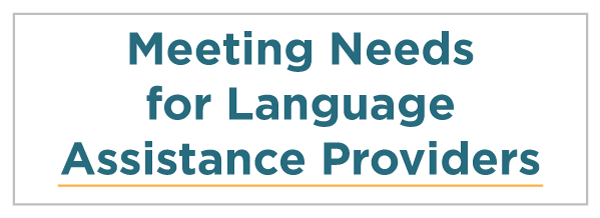 |
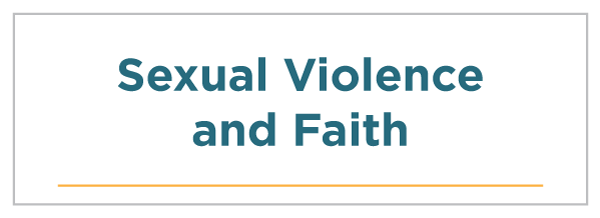 |
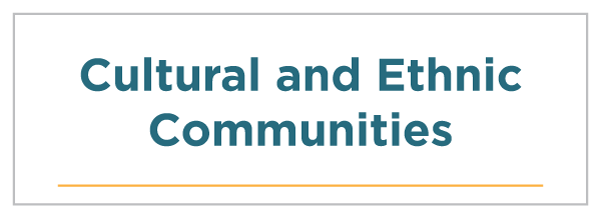 |
 |
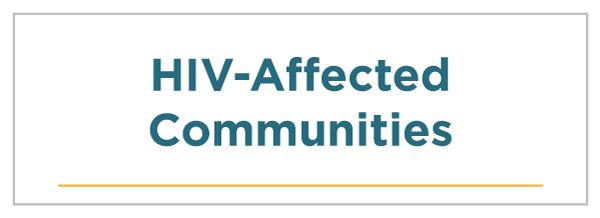 |
 |
 |
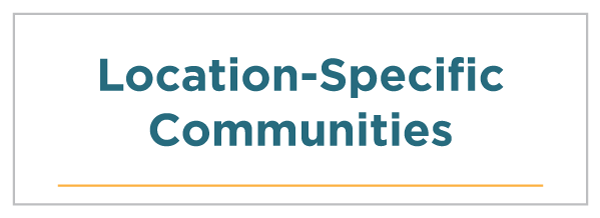 |
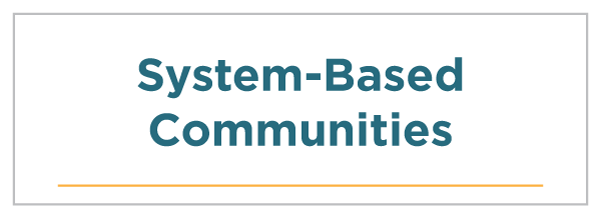 |
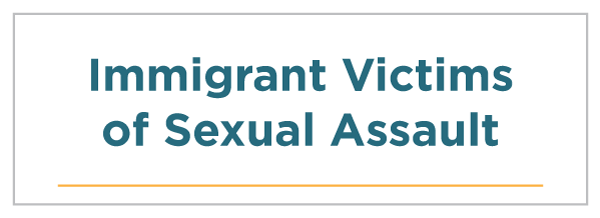 |
The SART Toolkit’s focus is adult victims of sexual assault. SARTs may choose their primary focus, such as sexual assault across the lifespan, sexual assault of adults and individuals later in life, or child victims. This section of the SART Toolkit addresses issues of sexual assault across the lifespan.
A SART’s treatment of victims of sexual assault who are minors varies. Some SARTs exist as part of the response to child sexual abuse, while other SARTs may invite their local child advocacy center (CAC) to SART meetings focused on adult or adolescent victims. Other locations, particularly rural areas, maintain separate meetings for SARTs and CACs but hold the meetings back to back at the same place, with separate agendas.
In areas where there are two distinct teams — a child protection team and a SART focused on adult victims — protocols are established that define who to call depending on the age of the victim, age of the perpetrator, and relationship to the perpetrator.
Serving child victims of sex crimes is a specialized skill set for advocates, law enforcement, medical providers, and prosecution. It requires relationships with child protective services, CACs (where applicable), and various state and federal agencies, depending on the perpetrator and the nature of the crime committed against the child. In instances of technology-related sex crimes, the FBI may become involved. In cases with a perpetrator well known in a community, the organization where the perpetrator gained access to the victim (or where the crime occurred) may work with the SART. The organization may provide critical information to support the investigation and offer support to members of the community affected by the sexual assault.
SARTs should be aware that adult victims they work with may have been victims of sexual assault as a minor and previously interacted with various systems. SARTs may also be responding to adult victims reporting an instance of child sexual abuse or working with adult victims of child sex crimes if images or video exist of that assault. SARTs may work with some victims repeatedly over the years, due to the circumstances or nature of the crime.
Many sections of the SART Toolkit will be helpful to SARTs working with minors, such as —
Many other sections of the SART Toolkit support the work of any SART, regardless of the population to be served.
SARTs whose focus is working with minors are encouraged to —
Child Abuse Prevention Network
The Child Abuse Prevention Network provides tools and information to professionals in the field of child abuse and neglect.
Crimes Against Children Research Center
The Crimes against Children Research Center (CCRC) seeks to combat crimes against children by providing high-quality research and statistics to the public, policymakers, law enforcement personnel, and other child welfare practitioners. CCRC is concerned with research about the nature and impact of crimes, including child abduction, homicide, rape, assault, and physical and sexual abuse.
Darkness to Light is committed to empowering adults to prevent child sexual abuse through prevention, training, and support.
National Center for Missing and Exploited Children
National Center for Missing and Exploited Children has a mission to help find missing children, reduce child sexual exploitation, and prevent child victimization. Since 1984, NCMEC has served as the national clearinghouse and resource center for families, victims, private organizations, law enforcement, and the public on issues relating to missing and sexually exploited children.
National Center for Prosecution of Child Abuse
The National Center for Prosecution of Child Abuse (NCPCA) holds national and local conferences and trainings, provides free online learning opportunities, and answers technical assistance requests.
National Children’s Advocacy Center
The National Children’s Advocacy Center provides education and leadership around child abuse response and prevention.
This organization is the national association and accrediting body for Children’s Advocacy Centers.
Child Advocacy Centers and SARTs (PDF, 4 pages)
This links to a discussion on NSVRC’s listserv related to child advocacy centers (CACs) and SARTs. While this information is from a discussion in 2007, examples of how communities manage various populations remain relevant for communities seeking to support children and adult victims in their communities.
Child Sexual Abuse Prevention Information Packet
This packet was developed by the National Sexual Violence Resource Center for sexual violence prevention educators, advocates, and their allied partners in public health and other disciplines. The packet contains resources to support the prevention of child sexual abuse and draws from research on child sexual abuse prevention programming, child sexual abuse risk and protective factors, and the public health model of prevention.
Adolescents in the United States are at significant risk for sexual assault. In one national survey, more than a quarter (27.4 percent) of 14- to 17-year-olds had been sexually victimized at some point in their lifetime. [227] In another survey of females who experienced a completed rape, almost a third (29.9 percent) were first raped between the ages of 11 and 17. [228]
Another national survey found that more than half of victims (60 percent of females and 69 percent of males) were first raped before age 18. [229] Of those victims, 35 percent of the females and 28 percent of the males were first raped between the ages of 12 and 17.
Youth of color, homeless youth, LGBTQ youth, and youth with disabilities are more likely to experience sexual violence than other youth. Studies have shown the following:
Youth who experience sexual assault are often victimized by their peers. One national survey showed 55 percent of unwanted sexual encounters were perpetrated by a peer. [236] Another study found that 74 percent of teen sexual assault victims aged 13 to 17 knew the person who perpetrated against them and 33 percent identified the perpetrators as friends. [237]
Sexual assaults against youth often occur in familiar places: 31 percent happened in the adolescent’s home; 24 percent happened in the adolescent’s neighborhood; and 15 percent happened in the adolescent’s school. [238]
Those who were sexually victimized as youth are more likely to be sexually assaulted again in the future. One national survey found that more than one-third of women who reported being raped before age 18 also experienced rape as an adult. [239]
Many young people do not seek help after a sexual assault. One national survey found the vast majority of sexual assaults against adolescents went unreported. [240] As with adult victims, it is not uncommon for friends and family of teen victims to blame them for the sexual assault (“Why were you drinking?” or “What were you wearing?” or “What were you doing out at that time?”). It is also not unusual in the legal arena for teens to be blamed to some degree, particularly if their victimization is combined with age-related crimes such as truancy or underage drinking. [241] Studies show that teen victims of crime receive poorer law enforcement response and less support than adult victims. [242]
The term “adolescence” is generally used to describe the transitional period of human development between the onset of puberty and adulthood. [243] The World Health Organization defines an adolescent as a young person between 10 and 19 years old. [244]
The beginning of puberty, while unique to each person, is relatively easily identified. However, when adulthood begins is not so easily fixed. Individuals are considered adults in the United States when they reach the age of 18 and have the right to vote and consent to medical treatment. The age at which other decisions can be made, such as consenting to sexual activity and marrying, is often younger (16), while the ability to purchase alcohol is often older (21).
Research over the past decade has begun to identify the changes that occur in the brains of adolescents as they mature through the teenage years. Increased sensation seeking and impulsivity has been linked to the adolescent’s slowly maturing prefrontal cortex, the area of the brain involved in reasoning, planning, and decision-making. [245] Changes to the brain during adolescence have also been linked to a greater responsiveness to environmental stimuli, greater susceptibility to negative stimuli, and increased vulnerability to drug addiction and mental illness. [246]
Seeking new sensations and experiences is a natural and important part of the maturation process. It is how we learn. But it also makes adolescence a time of great risk, including an increased risk of sexual exploitation. Teenagers are more likely than adults to experiment with illicit drugs, engage in risky sexual behavior, and drive recklessly.
The presence of teenage peers may add to the likelihood of engaging in risky behavior. According to the Association for Psychological Science, “[t]eens spend an increasing amount of time with their peers, and the feedback they get from their friends and classmates may tune the brain’s reward system to be more sensitive to the reward value of risky behavior. This sensitivity can lead teens to focus on the short-term benefits of risky choices over the long-term value of safe alternatives.” [247]
SART members should be cognizant of the need to tailor the SART response to the unique developmental needs of adolescent victims. Care should be taken not to inadvertently blame teens for the sexual assault, especially if their victimization comes after they engaged in risky choices, either by their own selection, perceived necessity, or actual necessity.
Team members should recognize the increased vulnerabilities inherent in adolescence and the impact that brain development may have on a teen victim’s willingness to fully disclose sexual assault, report to law enforcement, participate in any possible investigation, and seek assistance in healing.
SART members must strive for continuous relationship building, trust, and flexibility in their approach to this population. Understanding the impact of sexual assault as well as a youth’s history with family, housing, economic support, juvenile justice systems, and social service systems will help ensure that SARTs are better able to support teen victims in healing and seeking justice. This understanding is only possible by treating each adolescent victim with respect and listening to their individual story.
Taking time to learn, listen, and engage with youth on a regular basis will enhance each SART member’s ability to serve youth in meaningful ways. This strategy may involve the SART identifying where they can connect with youth in the community and investing time and resources in building connections. SARTs can also invite teen leaders from the community to meet with the SART to provide insight into issues facing their peers.
Technology continues to profoundly shift how daily communication among individuals is facilitated across all sectors of society, as well as how communication is documented. One downside to this phenomenon, especially for teens and young adults, is that technology is also emerging as a powerful tool for sexual exploitation.
Teenagers are particularly at risk for online solicitations, as they often are unsupervised on the computer and other electronic devices and are more likely than younger children to be involved in online discussions regarding companionship, relationships, or sexual activity. [248] In a national survey, approximately 13 percent of youth internet users reported receiving unwanted sexual solicitations.
The most common first encounter of a predator with an internet-initiated sex crimes victim took place in an online chat room (76 percent). Nearly half (47 percent) involved the predator offering gifts or money during the relationship-building phase. Approximately 9 percent of youth had been exposed to distressing sexual material while online. In more than one-quarter (27 percent) of incidents, solicitors asked youth for sexual photographs of themselves. One in 25 youths received an online sexual solicitation in which the solicitor tried to make offline contact.
Sexting is the creating, sharing, and forwarding of sexually suggestive nude or nearly nude images using electronic devices (e.g., phones, tablets, computers). [249] In one national survey on sexting, [250] 15 percent of cellphone-owning teens (aged 12 to 17) said they had received sexually suggestive nude and seminude images of someone they know via text, and 4 percent said they had shared naked pictures of themselves online or via text message. In another study, 26 percent of teenagers and young adults said they have participated in sexting. [251]
When individuals use sexting as a tool to perpetrate sexual violence, the insidious impact of the crime on victims can exponentially magnify. Individuals may distribute images unbeknownst to and without consent of the victim, and may use photos as bribes or harassment, or to otherwise coerce a victim into other acts against their will. Depending on the age of individuals involved, sharing images may be a crime as sharing images of minors is illegal.
Alternatively, photographs and videos may be taken during acts of consensual sex that are later distributed without consent. Photographs and videos may be taken during acts of sexual assault. The violence and the text commentary that can accompany these images can “reach the entire world and stay public forever.” [252] Tragically, the ongoing humiliation experienced by victims of sexual assault involving nonconsensual distribution of videos or images has led some teen victims to take their own lives.
SARTs should be familiar with the dangers of electronic communication as a means to sexually exploit youth. Educating parents, guardians, and adolescents can help to prevent crimes and let teen victims know that SART members are available for support and assistance. It is also important that SARTs plan their options for intervening in such cases and assisting victims.
SARTs can seek additional information on their use of technology or communicating with the victim using technology in the Confidentiality section of the SART Toolkit.
SARTs should be particularly aware of the public backlash and intense shame that teen victims may experience in the aftermath of sexual assault, which may be even more profound if images or videos are distributed, as this can create a risk for suicide. Discussing strategies to reduce suicide risk for teen victims, as well as other risks to physical safety and mental health, is an important component of a SART’s effort to create trauma-informed, victim-centered responses.
SART members must be aware of how each responding agency defines “adolescent,” including which services can be provided to individuals defined as adolescent. Disciplines may be able to provide all services to teens, some services, or services only with a release of information from parents. Some agencies may not serve adolescents by law or policy. Conflicts can potentially arise when responders of different disciplines are not aware of variations in how responding agencies can interact with and provide services to adolescent victims.
SARTs can use these conversations to identify appropriate referrals for adolescent victims and gaps in services, particularly to the youth most at risk. SARTs may identify gaps in services, such as emergency housing for adolescent victims of sexual assault, and work together to fill those gaps.
Your SART should also examine the laws of your jurisdiction, particularly those that affect adolescents, such as age of consent for sexual activity, the legal age to marry, and the emancipation process. This will ensure that SARTs are knowledgeable when working with adolescents and can help identify areas of legislation that could place youth at risk for exploitation and victimization.
State statutes generally define when minors can consent to health care, treatment for sexually transmitted infections (STI), and, in some cases, the medical forensic examination. Due to jurisdictional laws and policies, SARTs also use different indicators, age, capacity, or circumstances to determine if an adolescent can participate in the criminal justice system and what information can be kept private.
SART members should be aware of and follow jurisdictional laws related to health care and reporting of child sexual abuse:
According to the Department of Justice (DOJ) Office on Violence Against Women:
For instance, a state statute may allow minors to receive care for STIs and pregnancy, but not a medical forensic examination without parental or guardian consent. In some jurisdictions, a minor may consent to the examination but not keep the results private from a parent or legal guardian. Exceptions to parental consent requirements also exist when the parent or guardian is the suspected offender or where the parent or guardian cannot be found, and the collection of evidence needs to be done quickly. In such cases, the law generally specifies who may give consent in lieu of the parent or guardian, such as a police officer, representative from the jurisdiction’s children’s services department, or judge. [253]
Many SART members are required by state statute to report suspected child abuse to law enforcement or child protective service agencies. Jurisdictional policies should guide team members on when and to whom to report.
The touchstone of the obligation to report is that one must suspect the adolescent is in fact a victim of child abuse as defined by the jurisdiction. The fact that the victim is under the age of 18 does not necessarily indicate that a sexual assault is child abuse and should trigger mandatory reporting. Many states define child abuse as harm to children perpetrated by parents, guardians, foster parents, or by those acting in loco parentis. [254] Such definitions are not inclusive of sexual assault committed by other perpetrators.
Some states have additional mandatory reporting laws that require the reporting of suspected human trafficking or child sexual exploitation that are not dependent upon the perpetrator’s relationship to the child victim.
While each state’s criminal law is different, virtually all states have age-based sexual assault statutes. Most states create a hierarchical structure of offenses with two ages set — the age at which the law will recognize one’s ability to consent to sexual activity, and a lower age that makes sexual activity a more serious crime.
To complicate matters, some states consider the age of the offender and the relationship of the offender to the victim. In some circumstances, states provide a defense if the offender makes a reasonable mistake of fact as to the age of the victim.
Many states set the age of consent to sexual intercourse at 16 years, and the threshold age for the more serious offense at 12 years. That is, sexual penetration with another who is at least 13 years old but younger than 16 years old is a criminal offense. Sexual penetration with another who is less than 13 years old is a more serious crime carrying a greater penalty.
Knowing the criminal laws of the jurisdiction the SART operates in is essential, as is anticipating issues that may arise in age-based sexual assault cases, including —
Discussions among SART members are intended to identify special circumstances and develop protocols to ensure seamless provision of services. For more information, read the SART Protocol section of the SART Toolkit.
Adolescent Sexual Assault Victims’ Experiences with SANE-SARTs and the Criminal Justice System (PDF, 164 pages)
This final DOJ grant report examines the experiences of adolescent sexual assault victims and factors that predict positive prosecution of their cases.
Connections: Teen Sexual Assault Survivors — Legal Impacts and Considerations (PDF, 23 pages)
This 2009 edition of Washington Coalition of Sexual Assault Program’s quarterly newsletter includes several articles that focus on this topic.
Legal Age of Consent on Marriage and Sex in 50 U.S. States (PDF, 4 pages)
This chart from the Global Justice Initiative provides information about ages of consent in the United States.
Mandatory Reporting of Non-Accidental Injuries: A State by State Guide (PDF, 51 pages)
This 2014 document by the Victim Rights Law Center lists the full text of applicable state and territorial statutes requiring health care providers to report injuries and burns and any statutory exceptions made for victims of domestic violence or sexual assault.
A National Protocol for Sexual Assault Medical Forensic Examinations, Adults/Adolescents (PDF, 144 pages)
This 2013 document from the DOJ Office on Violence Against Women (OVW) details a national protocol for medical forensic examinations for adult and adolescent victims. Technical assistance on the protocol and the medical forensic exam in general is available through the SAFEta website, a project of the International Association of Forensic Nurses.
Overview of Adolescent Sexual Development (PDF, 6 pages)
This 2014 tool by the National Sexual Violence Resource Center (NSVRC) provides an overview of healthy adolescent sexual development by exploring age-appropriate behaviors and skills and how adults can support healthy development.
An Overview of Minors’ Consent Law
This page from the Guttmacher Institute provides an overview of the legal ability of minors to consent to health care services.
Safe Harbor Protocol Guidelines (PDF, 324 pages)
This resource from the Ramsey County Attorney’s Office in Minnesota includes best practices for communities, professionals, and agencies looking to develop protocol to address sexual exploitation of youth.
This 2003 Connecticut Office of Legislative Research report compiled U.S. statutory rape laws, including penalties, by state.
Teen Sexual Assault: Information for Teens (PDF, 6 pages)
Developed by the National Child Traumatic Stress Network, this handout outlines the difference between consent and coercion specific to sexual assault and answers a number of common questions and concerns directed toward a teen audience.
Teen Sexual Violence (PDF, 2 pages)
This 2017 information sheet from the Wisconsin Coalition Against Sexual Assault is a useful introductory overview for service providers on the topic.
Child Welfare Information Gateway
This website includes information and tools that service providers can use to improve their services for children.
A National Protocol for Sexual Abuse Medical Forensic Examinations, Pediatric (PDF, 233 pages)
This protocol provides national-level guidance for forensic examiners as well as other involved community responders on sexual abuse medical forensic examinations for prepubescent child victims. Technical assistance on the protocol is available through the Kidsta website, a project of the International Association of Forensic Nurses.
Elder abuse is a problem that is only starting to receive attention and recognition. Sexual abuse and assault of people in later life is a form of elder abuse rarely recognized or identified. SARTs may not necessarily handle many cases of sexual assault of people in later life, but understanding the dynamics of sexual assault of elder victims as well as available protections will help SARTs best serve any victims they encounter.
An adult is considered “older” at varying ages depending on state and federal law, such as the Older Americans Act.
Various jurisdictions and agencies define the “elder” portion of life differently but typically as commencing at 60. For example, the U.S. Census Bureau defines “older” as someone age 65 or above. [255] The phrase “abuse in later life” is often used in the domestic violence and sexual assault fields to refer to victims who are age 50 and older.
These victims may experience economic challenges that are important to consider when discussing options and additional services. Often victims ages 50 to 62 do not have access to TANF funds because they do not have younger dependent children, and yet they are too young to be eligible for Social Security.
As a SART, it is important to know your state’s elder abuse and vulnerable adult statutes. In all states, adult protective services workers investigate abuse against vulnerable adults. In some states, the definition of vulnerable adults is based on an individual’s ability to report abuse or take care of themselves. In other states, adult protective services respond to all older adults above a certain age as defined in statute. The National Adult Protective Services Association has an interactive map to help locate state Departments of Aging and local area agencies on aging. [256]
Elder sexual abuse can take many forms, such as intimate partner sexual assault, sexual abuse by caregivers, and sexual assault by staff or residents at residential care facilities. Recent research from the National Intimate Partner and Sexual Violence Survey (NISVS) found that more than 1 in 10 adults who are 70 years of age or older have experienced some form of abuse in the past year. [257] Another study of community-dwelling women 55 and older found that 3.2 percent of respondents reported experiencing some form of sexual abuse during the past year. [258]
“Historically, people in later life have not been considered potential or actual targets of sexual violence. There are many reasons for this, including ageist beliefs that they are not sexual beings and are not sexually desirable. Misconceptions regarding rape, including the myth that sexual assault is a crime of passion rather than a crime of violence, also contribute to people in later life being widely overlooked as victims.” [259]
In 2016, the CDC released Elder Abuse Surveillance: Uniform Definitions and Recommended Core Data Elements to encourage standardized definitions of elder abuse. Below are the CDC’s definitions of elder sexual abuse or abusive sexual contact: [260]
Forced or unwanted sexual interaction (touching and non-touching acts) of any kind with an older adult. This may include but is not limited to forced or unwanted completed or attempted contact between the penis and the vulva or the penis and the anus involving penetration, however slight. It might also include forced or unwanted contact between the mouth and the penis, vulva, or anus; forced or unwanted penetration of the anal or genital opening of another person by a hand, finger, or other object; forced or unwanted intentional touching, either directly or through the clothing, of the genitalia, anus, groin, breast, inner thigh, or buttocks. These acts also qualify as sexual abuse if they are committed against an incapacitated person who is not competent to give informed approval.
The statistics of sexual assault in later life illustrate the complexity of the issue related to age-related disabilities, the people who perpetrate, and the location where the abuse occurs.
Dynamics of sexual assault in later life include the following:
The impact of sexual assault in later life is significant, as it is for all victims, with additional consequences due to the age of the victim:
Elder victims are assaulted both in the community and in care facilities:
Legislation in each state and territory requires certain individuals and professionals to report alleged elder abuse and abuse of vulnerable adults to law enforcement, adult protective services, and other authorities.
In many jurisdictions, health care, criminal justice, social work, aging services, and other professionals who work with older adults are mandated to report suspected cases of elder abuse, including sexual assault. If abuse occurs within a certified care facility, there is generally a mandate to report to the regulatory agency, often state departments of health or human services.
Multiple factors may need to be considered when working with an elder victim, including age-related disabilities. For more information on communication and accessibility, see the section on Victims Who Have Disabilities in the SART Toolkit.
The American Speech Language Hearing Association offers suggestions on communicating most effectively with people in later life because of physical, psychological, and social changes associated with normal aging. Some suggestions include starting conversations with casual topics, sticking to a topic, and taking time to engage in a conversation. [270]
Generational differences are important to consider when working with people in later life. Ideas regarding the role of women in families, sexual activity and consent, and sexual assault as a crime committed by strangers may be different from those of younger generations.
Naming of body parts, sex, sexual assault, and domestic violence were rarely discussed in a public forum in previous generations. These considerations are important when interacting with an older adult. In addition, it can be especially challenging to talk about sexual assault in a long-term intimate partner relationship or sexual assault by an adult child or grandchild.
Perhaps most important to recognize when working with an elder is the amount of life experience the victim has. Life experiences such as growing up in a different culture, experiences with trauma or oppression, and other obstacles can impact a victim’s perspective more than generational beliefs. The older the victim, the higher the likelihood that past abuse was either not disclosed, not handled appropriately if disclosed, or disclosed in the absence of social services that could advocate for the victim.
It is vital for SARTs to build relationships with government, nonprofit, and for-profit organizations within the community, preferably before a case of sexual assault in later life occurs.
The most important connection may be with adult protective services, and it may be helpful to invite a representative from adult protective services to join the SART. Forging connections with other agencies serving older adults such as nursing and personal care homes, in-home care agencies, senior centers, and churches is also important.
An article called Providing Services to People Assaulted In Care Facilities discusses both the heightened risk factors and the importance of having services reach into these facilities
The Elder Justice Initiative provides resources for prosecutors, law enforcement, victim specialists, multidisciplinary teams (MDTs), researchers, and older Americans, families, and caregivers.
Elder Sexual Abuse (PDF, 17 pages)
This text course by Holly Ramsey-Klawsnik provides information about elder sexual abuse and equips social workers and related professionals to: (1) recognize the vulnerability of older adults to sexual assault, (2) help prevent this form of victimization, (3) recognize forensic markers, and (4) respond appropriately to alleged and confirmed cases.
Multidisciplinary Team Guide and Toolkit
This toolkit from the DOJ encourages the adoption of elder abuse case review within multidisciplinary teams (MDTs).
National Center on Elder Abuse Listserv
This listserv allows professionals who work in elder mistreatment, neglect, and exploitation to share information, post about events, and hold conversations.
Polyvictimization in Later Life
This six-hour web-based training through OVC Training and Technical Assistance Center is presented in five modules. The purpose of the training is to strengthen awareness of polyvictimization in later life and to provide knowledge and skills of professionals to address the needs of victims.
The training addresses the context of polyvictimization; victims and perpetrators of polyvictimization; best practices to work with older adults affected by polyvictimization using trauma-informed, ethical, and culturally appropriate practices; and the latest research and best practices to serve this population.
Preventing and Responding to Domestic and Sexual Violence in Later Life
This comprehensive collection of resources on VAWnet highlights the complexities of older people’s domestic violence and sexual assault experiences and emphasizes collaborative and multi-pronged approaches to addressing these crimes in later life.
Sexual Violence in Later Life Information Packet
The National Sexual Violence Resource Center (NSVRC) has created a series of resources related to sexual violence in later life.
Elder Sexual Assault Technical Assistance Manual (PDF, 16 pages)
This manual by the Pennsylvania Coalition Against Rape (PCAR) is designed for sexual assault advocates and other professionals to ensure that the proper response is used to help heal the elder victim after they have experienced sexual assault.
How can I and my agency best respond to victims of sexual violence in later life? This post by the National Sexual Violence Resource Center (NSVRC) provides insight and tips for organizations working with elder victims, including meeting survivors where they are and recognizing generational norms.
Working with Older Survivors of Abuse: A Framework for Advocates (PDF, 50 pages)
The National Clearinghouse on Abuse in Later Life released an online guide that describes seven guiding principles with guidelines and practical strategies for advocates when they work with victims who are in later life. There are also video links at the end of the document.
Sexual Violence in Later Life: A Technical Assistance Guide for Health Care Providers (PDF, 43 pages)
The purpose of this guide from the National Sexual Violence Resource Center (NSVRC) is to assist physicians, nurses, and other clinical health care providers in meeting their professional obligations in identifying and providing intervention and treatment to older victims of sexual assault.
The Challenges of Adult Victim Sexual Assault Cases: Elder Victims of Sexual Abuse: Faculty Manual (PDF, 10 pages)
This document by Legal Momentum includes a PowerPoint presentation and suggested reading for prosecutors.
Practical Issues: Preparing and Prosecuting Elder Sexual Assault Cases (PDF, 22 pages)
This 2017 booklet by the Pennsylvania Coalition Against Rape (PCAR) explores the obstacles to prosecution of elder sexual assault and offers practical solutions for professionals involved in these cases.
Elderly Victims of Sexual Abuse and Their Offenders (PDF, 157 pages)
This report by Ann Burgess includes data and analysis from 284 cases referred to law enforcement or to adult protective services for investigation of suspected sexual abuse.
Elder Sexual Abuse: The Hidden Victim — A Training Program for Law Enforcement (PDF, 229 pages)
This manual by the Pennsylvania Coalition Against Rape (PCAR) is designed to provide trainers with the necessary information to conduct a daylong training to enhance law enforcement’s ability to respond to crimes of elder sexual assault.
| Back | Index | Next |
